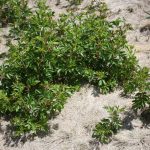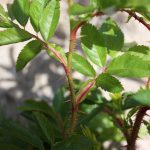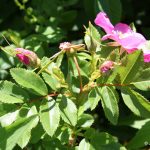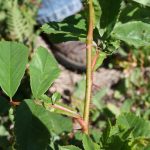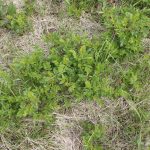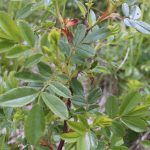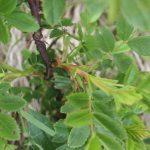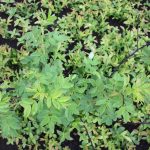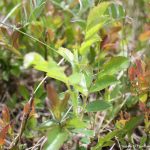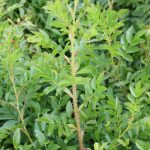Rosa spp.
Prepared by Jennifer L. D’Appollonio, Assistant Scientist, University of Maine, Orono, ME 04469. Updated February 2018.
Scientific name: Rosa spp. (e.g. Rosa virginiana P. Mill., Rosa carolina L., and/or Rosa nitida Willd.)
Common name(s): e.g., Virginia rose, common wild rose, prairie rose; Carolina rose, pasture rose; and/or shining rose, New England rose
Links: e.g., Virginia – USDA PLANTS Profile, NPIN Profile ; Carolina – USDA PLANTS Profile, NPIN Profile; Shining – USDA PLANTS Profile, NPIN Profile; tips for identifying to species – Go Botany
Images: (to see enlargements [PC]: click on image, then right click and choose “view image”)
- mowed rose, end of June
- mowed rose, can change morphology
- mid-July
- divided leaves
- stipules/prickles can change due to mowing or position on plant
- regrowth in mowed field – Virginia rose?
- usually 7-9 leaflets with forward curving toothed margins – Virginia rose?
- paired stout thorns – Virginia rose?
- in flower, late June – Rosa carolina?
- mowed, in prune blueberry field – Rosa carolina?
- detail showing straight thorns – Rosa carolina?
- mowed, in prune year blueberry field – shining rose?
Description:
-Rosaceae family
– flowering perennial
– thorny shrub
Leaves are
- toothed
- alternate
- pinnately compound
- odd number of leaflets
- wrinkled
-Flowers are fragrant
- five petaled
- pink
-stems have thorns
– roses can be difficult to identify in wild blueberry fields because the fields are pruned every other year. Many of the physical characteristics used to identify Rosa species are often altered or absent due to regular pruning to the ground.
– roses can also hybridize, showing characteristics of both parents.
Habitat:
-variable
-full sun
-high nutrient demand
-organic matter
Natural History:
-pulpy rose hips can be eaten raw or made into a jam
-petals and hips can be steeped to make a tea
-petals can be candied
Sources:
Brandeis University. “Noteable Features .” Rosa Spp.; Rose, 2002, www.bio.brandeis.edu/fieldbio/bersbach/EdiblePlants/rosaceae/rosa_spp.html.

